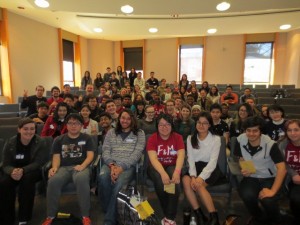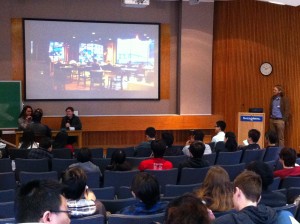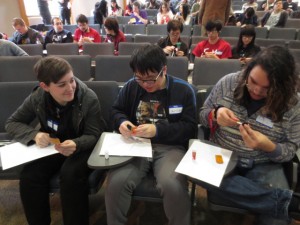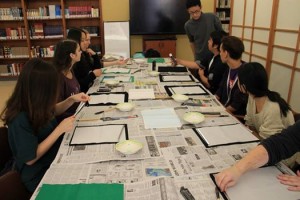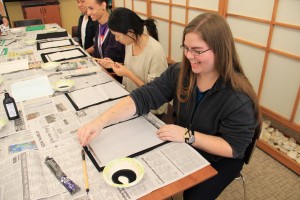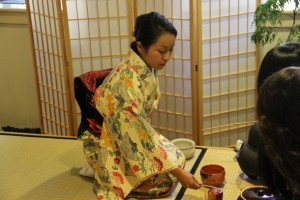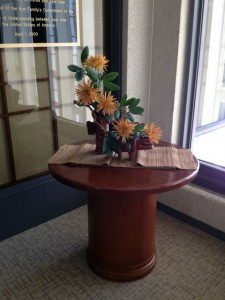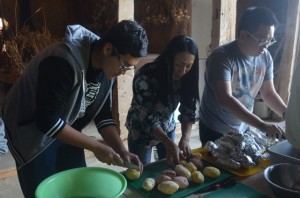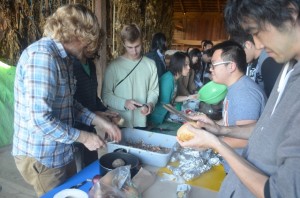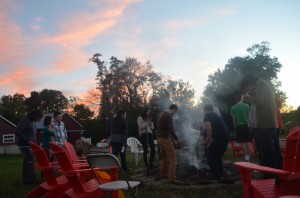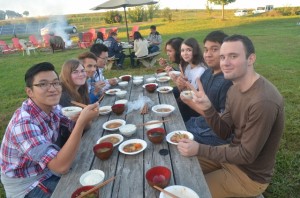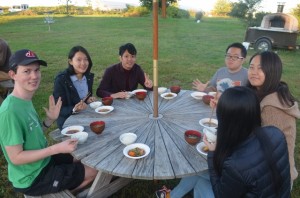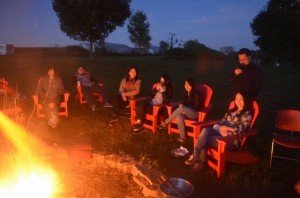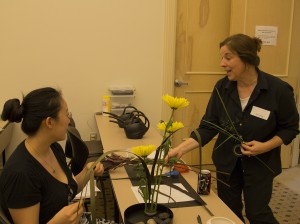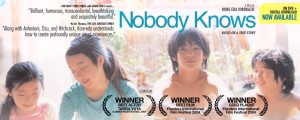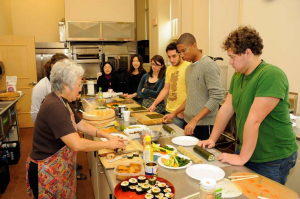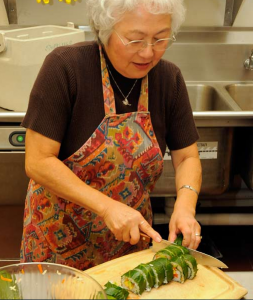Category Archives: Cultural Activities
Shodo Demonstration by AIU Student
Sado Demonstration
Ikebana Series by Harrisburg International Ikebana Chapter
The Dickinson College Library and East Asian Studies Department hosted weekly ikebana demonstrations led by members of the Harrisburg International Ikebana Chapter.
J-Table at Dickinson farm
Ikebana Program October 2, 2013
On October 2, 2013, a small Ikebana workshop was conducted by Ellen Kelly, a member of Harrisburg Chapter, Ikebana International.
Ellen Kelly lived in Japan for over 5 years and fell in love with Ikebana. She was excited to share this part of Japanese culture with the students.
Students were taught about the origins of Ikebana and were guided through creating their own pieces.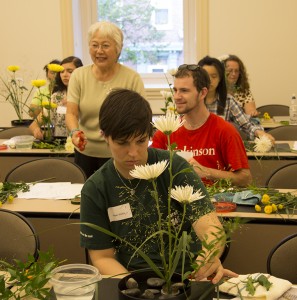
Funding for the workshop was generously provided by the department of East Asian studies, and the Luce Foundation.
Ikebana
Ikebana (lit. “flowers kept alive”) originated in sixth-century Japan as an expression of the beauty of nature; originally, Buddhist priests created the artful arrangements as offerings to the spirits of the dead. By the mid-15th century, ikebana was officially recognized in Japan as a high-art form, but it would be two more centuries before the merchant classes were permitted to practice it. Today, more than 2,000 schools of ikebana are registered with the Japanese government; Anna Nakada is a master of the ichiyo (“one leaf”) school, which takes into account the environment in which the arrangement will be displayed and the personal expression of the arranger.
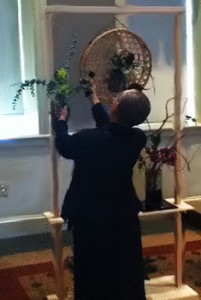
Ikebana Master Anna Nakada arranges flowers during a demonstration highlighting an ancient form of Japanese art. The flowers and branches she used were culled from the Dickinson campus.
Working in the Stern Center Great Room before a live audience, Nakada created several arrangements, using natural materials she’d gathered on campus with help from Randall Nenninger, manager of grounds and landscape services; Arborist Mike Shaffer; and Master Gardener Anne Dailey. Her two-hour demonstration, sponsored by the Department of East Asian Studies, was accompanied by an Waidner-Spahr Library exhibition of arrangements created by members of the Harrisburg chapter of Ikebana International. Nakada also fashioned a special arrangement to be included in a current exhibition at The Trout Gallery titled The Floating World: Ukiyo Prints From the Lauren Rogers Museum of Art.
As she created her ephemeral sculptures, Nakada explained that each piece in the arrangements represented an element of nature. She also spoke about the role of asymmetry in Japanese art; the proper composition of color, depth and height; the interplay between tradition and personal expression; and the discipline it takes to draw out expressions of nature that are as economically eloquent as nature itself.
“Ikebana is about selection,” she said of the painstaking process. “You have the whole world before you, and you select from it. Then you select, select and select again.”
Learning and Fun Through Film
Each semester Japanese films are
shown with English subtitles open to all students at Dickinson. Many of these films have won film awards and are highly regarded for their story lines and cinematography. Current films include:
- Norwegian Wood
- All About Lily Chou-Chou
- Nobody Knows
Learning How To Make Sushi
 Japanese language students can learn the centuries-old art of sushi-making while at Dickinson.
Japanese language students can learn the centuries-old art of sushi-making while at Dickinson.
Divided into stations, the students learned how to create maki by topping seasoned sticky rice with fish, vegetables and other ingredients and then rolling it all up in sheets of dried and pressed seaweed or collard greens.
“It’s harder than it looks,” says Chloe Mandell ’09, an East Asian studies major who says she made and ate a fair amount of sushi while studying in Japan. “But I love it.”
The class has been taught by Satsuki Swisher, a retired library cataloging coordinator and Japanese language professor who now works in The Trout Gallery and who learned to create sushi as a youngster. The secret to perfect sushi, Swisher advised, lies in the rice, which must be cooked properly and seasoned with rice vinegar, sugar and salt.
As the students sampled the sushi they’d made, Swisher smiled in approval.
“I think the students are doing wonderfully,” she said.
